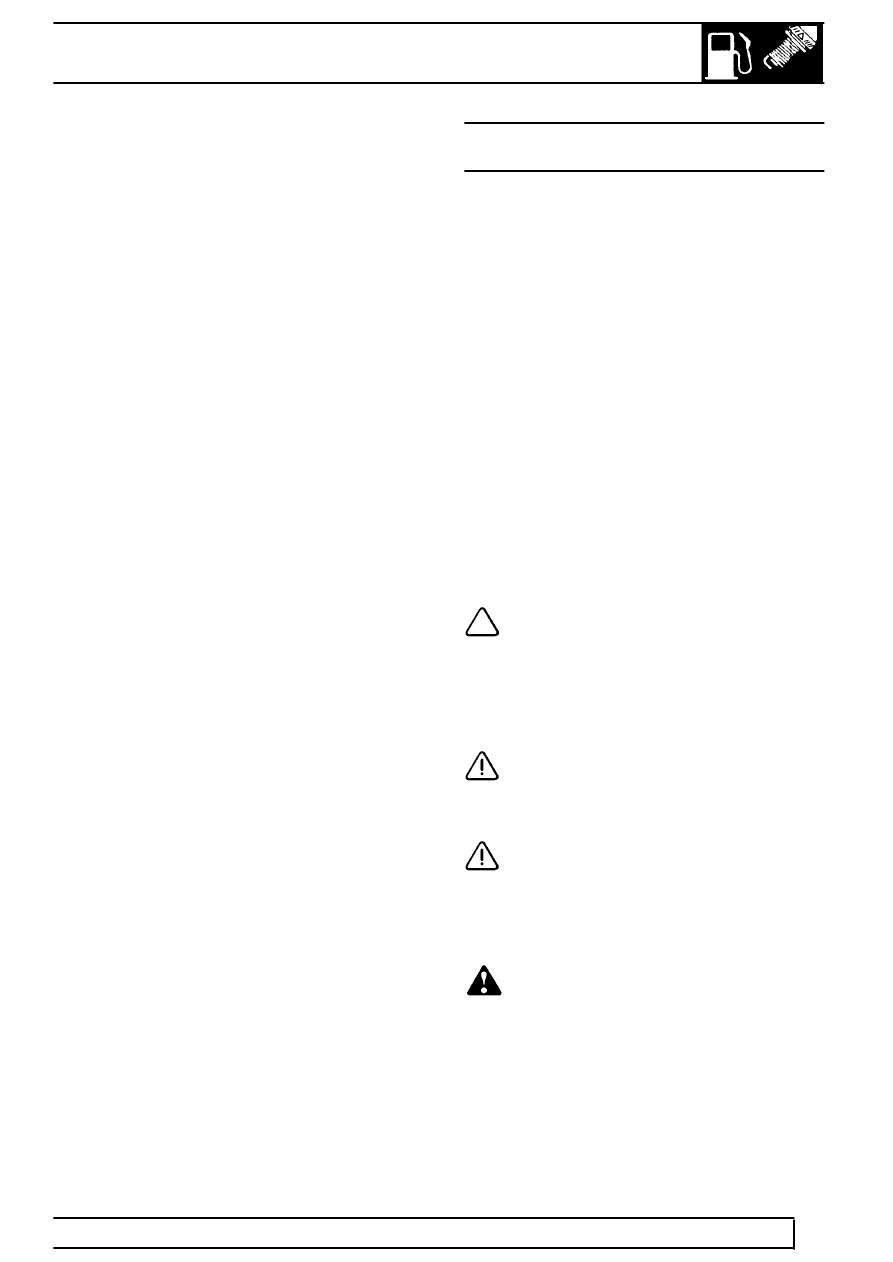Range Rover P38

EMISSION CONTROL
23
DESCRIPTION AND OPERATION
An anti-trickle fill valve is fitted to the filler neck in the
line between the tank and EVAP canister. The
function of this valve is to prevent the user overfilling
the tank by trickling fuel into the neck, thereby
preserving the vapour space in the tank to allow for
fuel expansion during hot weather.
The valve creates a blockage in the vent line during
the fuel filling process. The valve is operated by the
action of inserting the fuel filler gun. With the valve in
the closed position, air displaced during filling exits the
tank only through the internal fill breather. When the
fuel level reaches the level of the fill breather, the filler
neck fills with fuel, shutting off the filler gun.
The breather ports from the EVAP canister are
located high up in the engine bay (CVS unit on NAS
vehicles, snorkel tubes on ROW vehicles), to prevent
water ingress during vehicle wading.
The advanced evaporative loss control system used
on NAS vehicles is similar to the standard system, but
also includes a CVS unit and an in-tank pressure
sensor to monitor the pressure build-up for
determining whether leaks are present.
The function of the CVS unit is to block the
atmospheric vent side of the EVAP canister to enable
the ECM to carry out the EVAP system leak check.
The leak check is only carried out when the vehicle is
stationary and the engine is running at idle speed. The
test uses the natural rate of fuel evaporation and
engine manifold depression. Failure of the leak check
will result in illumination of the Malfunction Indicator
Lamp (MIL).
The fuel evaporation leak detection is included as part
of the On-Board Diagnostics (OBD) strategy and
checks for leaks greater than 1mm (0.04 in.) in
diameter. During checking, the vent and purge lines
are closed for a reference check on system pressure
to be determined. Then the purge valve is opened,
exposing the fuel tank and vent lines to engine
vacuum. The ECM then checks the signal from the
fuel tank pressure sensor for any pressure increase
(i.e loss of vacuum) which would indicate a leakage.
Any fuel evaporation system leaks which occur
between the output of the purge valve and the
connection to the inlet manifold cannot be determined
using this test, but this type of fault will be detected
through the fuelling adaption diagnostics.
EXHAUST EMISSION CONTROL COMPONENTS -
(from 99MY)
Catalytic converters
The catalytic converters are located in each of the
front pipes from the exhaust manifolds. The catalytic
converter’s housings are fabricated from stainless
steel and are fully welded at all joints. Each catalytic
converter contains two elements of an extruded
ceramic substrate which is formed into a honeycomb
of small cells with a density of 62 cells / cm
2
. The
ceramic element is coated with a special surface
treatment called ’washcoat’ which increases the
surface area of the catalyst element by approximately
7000 times. A coating is applied to the washcoat
which contains the precious elements Platinum (Pt),
Palladium (PD) and Rhodium(Rh) in the following
relative concentrations: 1 Pt : 21.6 PD : 1 Rh.
The metallic coating of platinum and palladium oxidize
the carbon monoxide and hydrocarbons and convert
them into water (H
2
O) and carbon dioxide (CO
2
). The
coating of rhodium removes the oxygen from nitrogen
oxide (NO
x
) and converts it into nitrogen (N
2
).
NOTE: Catalytic converters for NAS low
emission vehicles (LEVS) from 2000MY
have active constituents of Palladium and
Rhodium only. The proportion of active
constituents are 14 PD: 1 Rh, and the Palladium
coating is used to oxidise the carbon monoxide
and hydrocarbons in the exhaust gas.
CAUTION: Catalytic converters contain
ceramic material which is very fragile.
Avoid heavy impacts on the converter
casing.
CAUTION: Serious damage to the catalytic
converter will occur if leaded fuel or a
lower octane number fuel than
recommended is used. The fuel tank filler neck is
designed to accomodate only unleaded fuel pump
nozzles.
WARNING: To prevent personal injury
from a hot exhaust system, do not attempt
to disconnect any components until the
exhaust system has cooled down.
